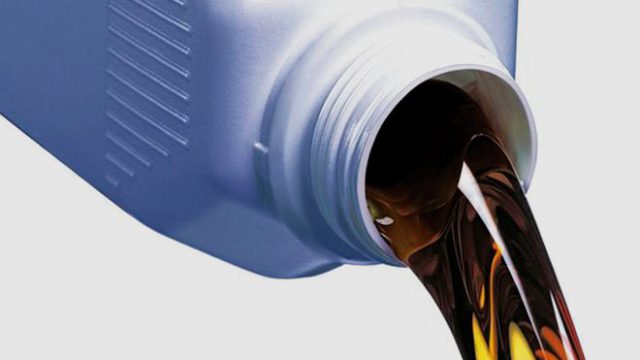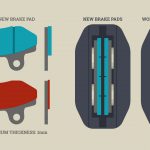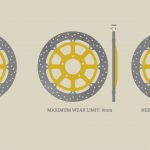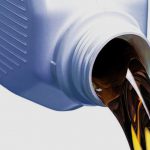Here’s how to check the condition of your motorcycle braking system
A motorcycle braking system consists of brake pads, brake discs, calipers, brake pump, brake liquid and brake hoses. The entire assembly is able to stop the bike regardless of the weather conditions or speed. A few braking elements are consumables and need to be checked from time to time. Checking your braking system must become a routine for every rider. Here’s what to look for.
Worn brake pads
The brake pads have a tremendous contribution to the bike's braking power. Unfortunately, the pads are the first to reach their end. Depending on the riding style and bike, the original pads will allow you 20,000 km (12,400 miles) of riding, while aftermarket ones will meet the end in less than 15, 000 km (9,300 miles). You have to take a look from time to time to check their status. No matter the manufacturer, the pads usually come with a wear limit marker. If not, a thickness of two millimeters is a sign they should be replaced. Try to replace them as quick as possible, otherwise, you will end up destroying the discs.
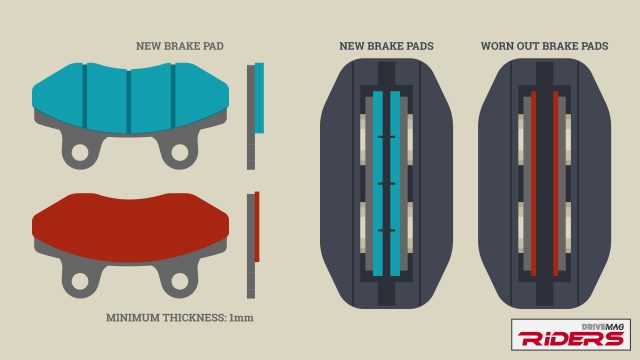
Use a flashlight and look along the brake disc towards the caliper: the line goes straight through the middle of the pad and is usually visible. If the pads are in good condition, clean them with a bit of brake cleaner after every long trip.
Worn brake discs
The brake disc absorbs the braking torque while dissipating heat generated by braking. In other words, this stainless steel part will handle a lot of pressure. For the latest brake discs, manufacturers combine materials like stainless steel and aluminum to extract higher efficiency from the braking system. A brake disc can last even 50,000 km (31,000 miles) depending on the type of brake pads you use. Harder pads that contain more metal inside will wear up the discs quicker.
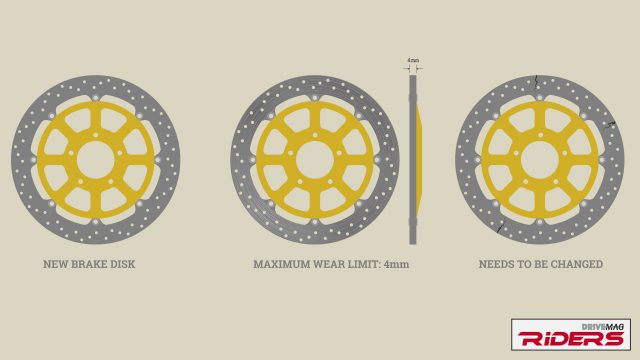
Checking the brake disc's usage is a very simple operation. You just have to touch the surface of the disc and move your finger along the braking surface. Be careful: if the bike just stopped, the discs may be hot. If you feel grooves larger than 1.5 mm and you can stick your nails inside, you should check the disc's thickness. The maximum wear limit is 4 mm, everything below that is not safe and needs replacement. Check also for small cracks or warps on the disc's surface. These may occur due to sudden temperature change, for example when you wash your bike while it is still hot from a long trip.
Brake fluid
There’s nothing magic about it the brake fluid: it's just another type of hydraulic fluid based on glycol and ether or silicone. It’s not compressible, so it can transfer the pressure from the brake pump to the caliper in order to stop you. The main property of this substance is the increased boiling point. Besides that, it is responsible for lubricating the braking system and keeping it corrosion free. The brake fluid needs to be changed at least every three years, this way you will get the maximum power from your braking system.
